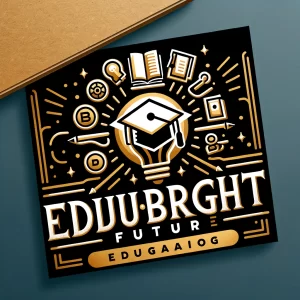In today’s rapidly evolving world, education serves as the cornerstone of growth and innovation. Recognizing this, it’s essential to implement interactive learning strategies that not only engage but also inspire our young learners. The classroom is no longer just a place for traditional teaching; it’s a vibrant hub of curiosity and exploration.
The Rise of Interactive Learning Environments
At the heart of this transformation is the integration of technology and hands-on learning tools, which are proven to enhance comprehension and retention among children. Classrooms worldwide are adopting interactive learning environments equipped with the latest educational technology, from tablets to science kits. These tools enable students to dive deeper into subjects and discover their passions in real-time, fostering a more engaging and effective learning experience.
The Role of Technology in Education
Technology has revolutionized the educational landscape by providing dynamic, interactive tools that make learning more engaging and accessible. Tablets and computers allow students to access a wealth of information at their fingertips, participate in interactive lessons, and engage in educational games that reinforce learning objectives. Interactive whiteboards and virtual reality experiences can bring complex concepts to life, making them easier to understand and more exciting to explore.
Hands-On Learning Tools
In addition to digital technology, hands-on learning tools such as science kits, art supplies, and building materials encourage experiential learning. These tools enable students to experiment, create, and discover through tactile and kinesthetic activities, which can be particularly beneficial for young learners. By physically manipulating objects and engaging in practical tasks, students can better grasp abstract concepts and develop critical thinking and problem-solving skills.
The Evolving Role of Educators
The role of educators has also transformed in this new educational paradigm. Teachers are no longer merely conveyors of knowledge but facilitators of discovery. In a classroom filled with eager young minds, such as the one pictured, teachers guide students through complex concepts with ease and enthusiasm. They provide the necessary resources and support for children to experiment, ask questions, and solve problems creatively.
Facilitators of Discovery
Educators in interactive classrooms act as guides, helping students navigate through their learning journeys. They create a supportive environment where students feel comfortable exploring new ideas and taking intellectual risks. By encouraging inquiry and fostering a culture of curiosity, teachers help students develop a love for learning that extends beyond the classroom.
Personalized Instruction
Interactive learning environments also allow for more personalized instruction. Teachers can use technology to track student progress and tailor lessons to meet individual needs. This approach ensures that each student receives the appropriate level of challenge and support, promoting a more inclusive and effective learning experience.
Catering to Diverse Learning Styles
The diversity of activities available in dynamic classrooms caters to various learning styles. Whether a child is a visual learner, an auditory learner, or a kinesthetic learner, interactive tools offer something for everyone. This inclusive approach not only supports individual learning preferences but also promotes a collaborative learning culture where students can work together and learn from each other.
Visual Learners
Visual learners benefit from interactive whiteboards, videos, and graphics that help them visualize concepts. These tools make abstract ideas more concrete and accessible, enhancing comprehension and retention.
Auditory Learners
Auditory learners thrive in environments where they can listen to explanations, participate in discussions, and engage with audio content. Interactive learning environments often include podcasts, recorded lectures, and other auditory resources that cater to these learners.
Kinesthetic Learners
Kinesthetic learners learn best through hands-on activities and physical engagement. Science experiments, art projects, and interactive games provide these students with opportunities to explore and understand concepts through movement and manipulation.
Building a Foundation for Lifelong Learning
This focus on interactive learning is not just about academic success; it’s about building a foundation for lifelong learning. By fostering an environment where children feel encouraged to think critically and creatively, we prepare them for the future challenges and opportunities that await.
Critical Thinking and Problem-Solving
Interactive learning environments encourage students to think critically and solve problems creatively. By engaging in activities that require them to analyze information, make decisions, and develop solutions, students build essential skills that will serve them well throughout their lives.
Collaboration and Communication
Collaborative learning activities help students develop strong communication and teamwork skills. By working together on projects and sharing ideas, students learn to appreciate diverse perspectives and build effective collaboration skills.
The Path Forward
As we continue to advance in our educational methods, the goal remains clear: to ignite the innate curiosity in every child and equip them with the skills to navigate and succeed in the complex world around them. Let’s commit to making every classroom a space of endless possibilities and discovery.
By embracing interactive learning strategies, integrating technology, and fostering a supportive and inclusive environment, we can transform education and empower our students to become the innovators, leaders, and thinkers of tomorrow. The future of education is bright, and it begins with the steps we take today to inspire and engage our young learners.
